Coin Type Lithium Manganese Dioxide Rechargeable Batteries (ML)
Features
Approx. 2.5 V operating voltage
The operating voltage is about twice that of nickel cadmium rechargeable batteries. Displays a high discharge voltage of 2.8 V when at 10% of nominal capacity (depth of discharge is 10% or less), when charged at 3.0 to 3.3 V.
Superior charge/discharge characteristics
Achieves 1,000 cycles of discharging to 10% of nominal capacity (Depth of discharge = 10%). The total discharge capacity is quite high at 100 times nominal capacity. (shipped fully charged)
Wide -20 deg. C to 60 deg. C operating temperature range
Demonstrates stable operating voltage in temperatures as low as -20 deg. C and as high as 60 deg. C.
Low self-discharge rate and superior leakage resistance
Self-discharge at 20 deg. C is no more than 2% per year. Supplies a nominal capacity of about 95% even when stored at 20 deg. C for roughly five years (according to accelerated test conducted by Maxell). And since organic electrolyte is used, the battery has superior leakage resistance.
Excellent floating characteristics
A specially formulated organic electrolyte is employed to provide stable discharge characteristics even if charged for a year at 3.3 V at 20 deg. C (according to accelerated test conducted by Maxell).
Excellent high rate discharge characteristics
About Maxell ML batteries
Maxell ML (lithium manganese dioxide rechargeable) batteries are available only for equipment manufacturers as a built-in part. Therefore, Maxell does not supply these batteries for replacement directly to users of equipment with these batteries. When built-in ML batteries need to be replaced, please contact your equipment manufacturer. If you are planning to use Maxell ML batteries in your equipment as a built-in part, please contact Maxell.
UL Recognized Components
The coin type lithium manganese dioxide rechargeable battery is a UL recognized component. (Technician Replaceable)
Recognized models: ML2032, ML2016H
Certification number: MH12568
Applications
RTC/Memory Backup
- Desktop PCs
- Video cameras
- Medical instrument
- FA Instruments
- Communication devices
Main Power Source
- Rechargeable watches (solar watches)
- Combination with energy harvesting (e.g. solar cell)
Specifications
| Model | ML2016H | ML2032 | |
|---|---|---|---|
| Nominal Voltage (V) | 3 | 3 | |
| Nominal Capacity (mAh)*1 | 30 | 65 | |
| Nominal Discharge Current (µA) | 200 | 200 | |
| Charge/Discharge Cycle Lifetime | Depth of Discharge = 10% |
1500 | 1000 |
| Depth of Discharge = 100% |
40 | 30 | |
| Operating Temperature Range (deg. C) | -20 to +60 | ||
| Dimensions*2 | Diameter (mm) | 20 | 20 |
| Height (mm) | 1.6 | 3.2 | |
| Weight (g)*2 | 1.7 | 3.0 | |
| Data Sheets | |||
| Drawings of Batteries with Terminal or Wire Connector |
- | ||
| Warnings | |||
- Nominal capacity indicates duration until the voltage drops to 2.0 V when discharged at a nominal discharge current at 20 deg. C.
- Dimensions and weight are for the battery itself, but may vary depending on terminal specifications and other factors.
- Data and dimensions are not guaranteed. For further details, please contact your nearest Maxell office.
- Contents on this website are subject to change without notice.
Construction
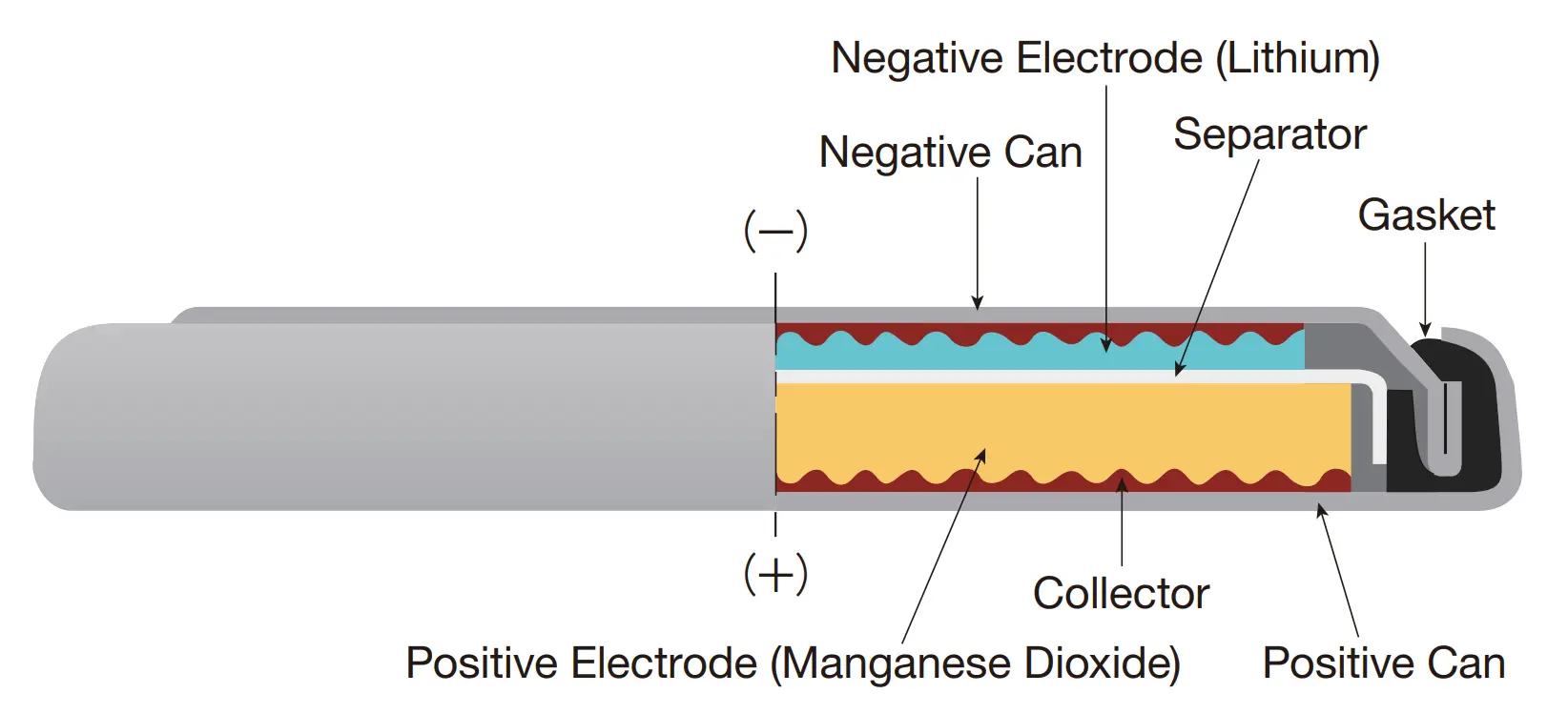
Principle and Reactions
The coin type lithium manganese dioxide rechargeable battery is a 3 V battery using specially treated manganese dioxide for the positive mateiral, a lithium-aluminum compound for the negative material and a specially formulated organic electrolyte.

Discharge Characteristics
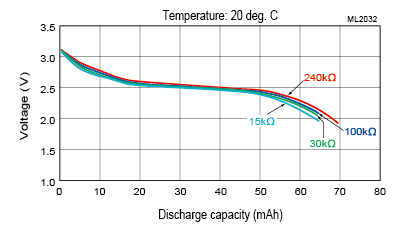
Charge/Discharge Cycle Performance
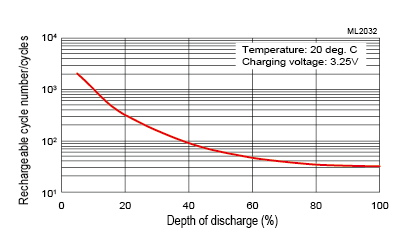
Temperature Characteristics
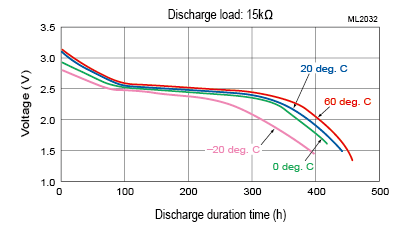
Strage Characteristics
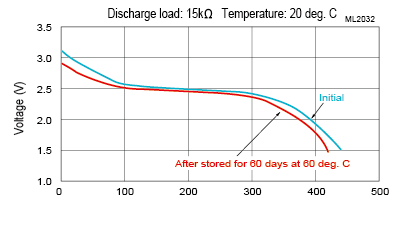
Safety precautions
If misused, this battery may deform, leak (the liquid inside the battery may leak to the outside), generate heat, explode, or ignite.
Since such misuse may cause injury or equipment failure, please be sure to read and observe [Warnings and Cautions].



